
The Royal Liver Building is a Grade I listed building in Liverpool, England. It is located at the Pier Head and along with the neighbouring Cunard Building and Port of Liverpool Building is one of Liverpool's Three Graces, which line the city's waterfront. It was also part of Liverpool's formerly UNESCO-designated World Heritage Maritime Mercantile City.
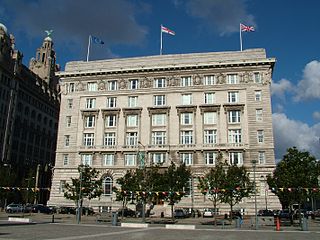
The Cunard Building is a Grade II* listed building in Liverpool, England. It is located at the Pier Head and along with the neighbouring Royal Liver Building and Port of Liverpool Building is one of Liverpool's Three Graces, which line the city's waterfront. It is also part of Liverpool's former UNESCO designated World Heritage, the Maritime Mercantile City.

The Pier Head is a riverside location in the city centre of Liverpool, England. It was part of the former Liverpool Maritime Mercantile City UNESCO World Heritage Site, which was inscribed in 2004, but revoked in 2021. As well as a collection of landmark buildings, recreational open space, and a number of memorials, the Pier Head was the landing site for passenger ships travelling to and from the city.

St Luke's Church, more commonly known by locals as the bombed-out church, is a former Anglican parish church in Liverpool, England. It stands on the corner of Berry Street and Leece Street, at the top of Bold Street.

The Church of Our Lady and Saint Nicholas is the Anglican parish church of Liverpool. The site is said to have been a place of worship since at least the 1250s. The church is situated close to the River Mersey near the Pier Head. The Chapel of St Nicholas was built on the site of St Mary del Quay, which in 1355 was determined to be too small for the growing borough of Liverpool. It is recorded in the National Heritage List for England as a designated Grade II listed building, and is an active parish church in the diocese of Liverpool, the archdeaconry of Liverpool and the deanery of Liverpool North. It is part of the Greater Churches Group. From 1813 to 1868 the church was the tallest building in Liverpool at 174 feet [53 m], but then surpassed by the Welsh Presbyterian Church in Toxteth.
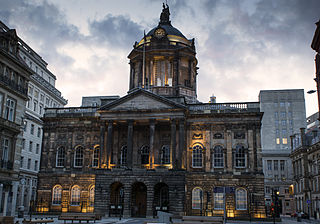
Liverpool Town Hall stands in High Street at its junction with Dale Street, Castle Street, and Water Street in Liverpool, Merseyside, England. It is recorded in the National Heritage List for England as a designated Grade I listed building, and described in the list as "one of the finest surviving 18th-century town halls". The authors of the Buildings of England series refer to its "magnificent scale", and consider it to be "probably the grandest ...suite of civic rooms in the country", and "an outstanding and complete example of late Georgian decoration".
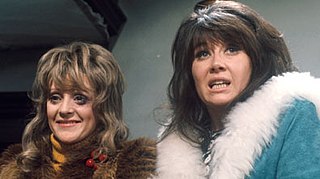
The Liver Birds is a British sitcom, set in Liverpool, North West England, which aired on BBC1 from April 1969 to December 1978, and again in 1996. The show was created by Carla Lane and Myra Taylor. The two Liverpudlian housewives had met at a local writers club and decided to pool their talents. Having been invited to London by Michael Mills, the BBC's then Head of Comedy, and asked to write about two women sharing a flat, Mills brought in sitcom expert Sydney Lotterby to work with the writing team.

The liver bird is a mythical creature which is the symbol of the English city of Liverpool. It is normally represented as a cormorant, and appears as such on the city's arms, in which it bears a branch of laver seaweed in its beak as a further pun on the name "Liverpool".

Tower Buildings is a former office block in the city of Liverpool, Merseyside, England. It stands with its longer front on the east side of the Strand, and extends round the corner into Water Street. The building is located directly opposite the Royal Liver Building, which was designed by the same architect. Earlier buildings on the site have been a sandstone mansion, and a later fortified house known as the Tower of Liverpool. After this was demolished in 1819, it was replaced in 1846 by the first structure to be named Tower Buildings. The present structure is one of the earliest steel-framed buildings in England, and details of its architecture reflect the earlier fortified building on the site. It is a building
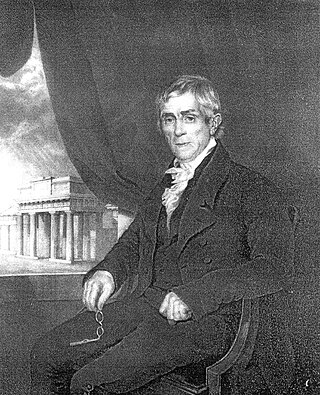
Thomas Harrison was an English architect and bridge engineer who trained in Rome, where he studied classical architecture. Returning to England, he won the competition in 1782 for the design of Skerton Bridge in Lancaster. After moving to Lancaster he worked on local buildings, received commissions for further bridges, and designed country houses in Scotland. In 1786 Harrison was asked to design new buildings within the grounds of Lancaster and Chester castles, projects that occupied him, together with other works, until 1815. On both sites he created accommodation for prisoners, law courts, and a shire hall, while working on various other public buildings, gentlemen's clubs, churches, houses, and monuments elsewhere. His final major commission was for the design of Grosvenor Bridge in Chester.
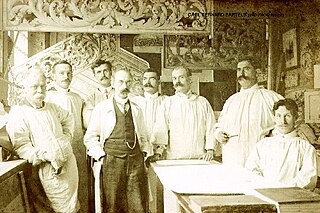
Carl Bernard Bartels was a sculptor.
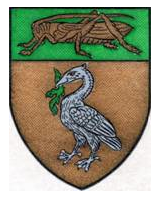
Martins Bank was a London private bank, trading for much of its time under the symbol of “The Grasshopper”, that could trace its origins back to Thomas Gresham and the London goldsmiths, from which it developed into a bank known as Martin's Bank from 1890. That bank was acquired in 1918 by the Bank of Liverpool, which wanted Martins to give it a London presence and a seat on the London Bankers' Clearing House. The Martin name was retained in the title of the enlarged bank which was known as the Bank of Liverpool and Martins Limited. The title was shortened to Martins Bank Limited in 1928 at the insistence of the directors of the Lancashire and Yorkshire Bank when it was bought by the Bank of Liverpool and Martins. The head office and managerial control remained firmly in Liverpool, cementing Martins' place as the only English national bank to have its head office outside London. It was taken over in 1969 by Barclays.

St Peter's Church is an inclusive Anglican parish church in Walworth, London, in the Woolwich Episcopal Area of the Anglican Diocese of Southwark. It was built between 1823–25 and was the first church designed by Sir John Soane, in the wave of the church-building following the Napoleonic wars. It is the best preserved of Soane's churches.

One Park West is a 17-storey building in central Liverpool, England, designed by architect César Pelli. Bordering Chavasse Park, it is part of Liverpool One, a 42-acre (17 ha) £920m redevelopment of Liverpool's city centre. The developer was the Duke of Westminster's Grosvenor Group. One Park West consists of 326 apartments, offices, restaurants, cafés and parking. Blocks B and A of One Park West are the 21st and 31st tallest buildings in Liverpool respectively.

The Bromsgrove Guild of Applied Arts (1898–1966) was a company of modern artists and designers associated with the Arts and Crafts Movement, founded by Walter Gilbert. The guild worked in metal, wood, plaster, bronze, tapestry, glass and other mediums.

Wavertree Botanic Garden and Park is a mid-19th century public park in Liverpool, England. Originally constructed as a private botanic garden, it was taken over by Liverpool Corporation in 1846 and expanded into a public park.

The architecture of Liverpool is rooted in the city's development into a major port of the British Empire. It encompasses a variety of architectural styles of the past 300 years, while next to nothing remains of its medieval structures which would have dated back as far as the 13th century. Erected 1716–18, Bluecoat Chambers is supposed to be the oldest surviving building in central Liverpool.
Sir Arnold Thornely was an English architect who practised in Liverpool. Although most of his designs were for buildings in Liverpool and the northwest of England, he is best known for the Parliament Buildings in Belfast, Northern Ireland. Thornely was knighted in 1932, and in the following year received the Bronze Medal of the Royal Institute of British Architects for Ulster.

The Lexington is a 35-storey residential building at Princes Dock in Liverpool, England. Part of the larger Liverpool Waters re-generation project, it was completed in September 2021. Estimated to cost £90 million, the "New York style" building includes 325 apartments, a sky lounge, gym and rooftop garden. Upon completion, it became the third tallest building in Liverpool at 112.5 m (369 ft).

St. John's Market was a municipal retail market hall in Liverpool, England, housed in a purpose-designed building erected between 1820 and 1822 to a design by John Foster, Junior. It quickly came to be seen as a model for market halls erected elsewhere in the UK in the 19th century. The north and south facades of the building were altered in 1881 and 1891; it was demolished in 1964, making way for the 1969 St Johns Shopping Centre, the western half of which occupies the hall's site.



















